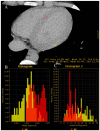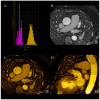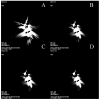Dual-Energy Heart CT: Beyond Better Angiography-Review
- PMID: 34768713
- PMCID: PMC8584316
- DOI: 10.3390/jcm10215193
Dual-Energy Heart CT: Beyond Better Angiography-Review
Abstract
Heart CT has undergone substantial development from the use of calcium scores performed on electron beam CT to modern 256+-row CT scanners. The latest big step in its evolution was the invention of dual-energy scanners with much greater capabilities than just performing better ECG-gated angio-CT. In this review, we present the unique features of dual-energy CT in heart diagnostics.
Keywords: coronary arteries; dual-energy CT; heart; spectral computed tomography.
Conflict of interest statement
The authors declare no conflict of interest.
Figures









References
-
- Siegel M.J., Kaza R.K., Bolus D.N., Boll D.T., Rofsky N.M., De Cecco C.N., Foley W.D., Morgan D.E., Schoepf U.J., Sahani D.V., et al. White Paper of the Society of Computed Body Tomography and Magnetic Resonance on Dual-Energy Ct, Part 1: Technology and Terminology. J. Comput. Assist. Tomogr. 2016;40:841–845. doi: 10.1097/RCT.0000000000000531. - DOI - PubMed
-
- Fredenberg E. Spectral and Dual-Energy X-ray Imaging for Medical Applications. Nucl. Instrum. Methods Phys. Res. Sect. A Accel. Spectrometers Detect. Assoc. Equip. 2018;878:74–87. doi: 10.1016/j.nima.2017.07.044. - DOI
Publication types
LinkOut - more resources
Full Text Sources

